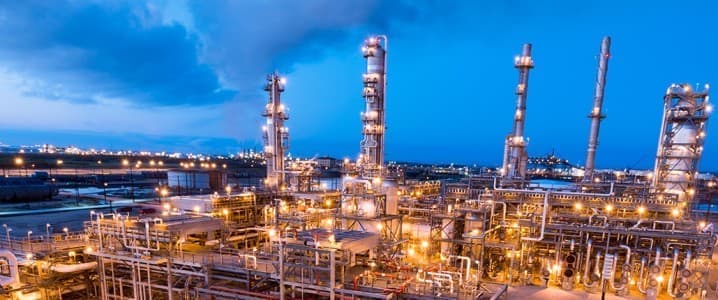Global crude oil exports continue to hold strong and above the latest ten-year seasonal average. Demand, however, is also holding strong this summer, absorbing an increase in South American supply led by Brazil and Guyana, and production hikes in the Middle East as OPEC+ continues to ease output cuts.
As a result, the market appears balanced near the end of the peak summer consumption period in the northern hemisphere. But fears are that oversupply will materialize in the fourth quarter to depress prices, once peak demand season and the unwinding of the OPEC+ cuts are over.
South America Drives Increase in Global Crude Shipments
“Despite fears that the swift unwinding of production cuts from the eight core OPEC+ members, and subsequent increased exports mainly from Saudi Arabia and the UAE could push crude markets into oversupply, this has not concretely materialised as of yet,” Mark Toth, an analyst at energy trade flow analysts Vortexa, wrote this week in an analysis on global crude shipments.
Global crude and condensate departures remained elevated during the first half of August 2025 at around 41 million barrels per day (bpd), Vortexa has estimated. That’s 2% above the 2016-2024 seasonal average and higher than both 2023 and 2024 levels.
Crude exports in the Pacific basin were 7% lower than the seasonal average, but South America – where Brazil and Guyana are boosting production – led increased shipments. South America’s exports stood 9% above the 2016-2024 seasonal high for August during the first 15 days. In addition, exports from the wider Atlantic basin region in general remained strong, according to Vortexa’s data.
Related: Angola’s Oil Output Slips Below 1 Million Bpd in a First Since OPEC Exit
Exports from the most important crude producing and exporting region, the Middle East, haven’t surged despite the continuous rollback of the OPEC+ production cuts. One reason is that some members, such as Iraq, are trying to compensate for past overproduction and are not boosting output. Another reason is high oil demand for power generation in the Middle Eastern countries amid scorching summer temperatures—a typical pattern of oil demand in the world’s top crude oil exporter Saudi Arabia and other Gulf countries.
The compensation for overproduction and increased domestic demand have moderated onshore inventory build within the wider OPEC+ group, with onshore crude stocks 4% below the seasonal average, according to the Vortexa Global Inventory Report from August 15.
Downward Pressure on Oil Prices Emerges
“However, as domestic demand decreases within OPEC+ as the summer season comes to an end, with further production increases in September, it is questionable whether the current level of price stability will persist,” Vortexa’s Toth notes.
The backwardation in the Dubai market between prompt-month and third-month forward contracts narrowed to $2.37 per barrel on August 15, from nearly $3 a barrel at the start of the month, per Argus data cited by Vortexa. Still, the backwardation – the market structure when supply is tight, and in it, prices for front-month contracts are higher than the ones further out in time – remains above the $2.104 per barrel average on the Dubai market for the first half of 2025.
But analysts have started to notice narrowing backwardation in the market—a signal that traders believe supply would be plentiful as soon as peak summer travel season ends.
This summer, the market has been in backwardation amid strong refinery runs globally and tighter markets for fuels, especially diesel in the United States.
But the premiums of the prompt futures compared to later-dated contracts have been falling—a sign that traders expect the rise in supply to soon ease the market tightness once demand starts to weaken after the peak summer season.
With refinery runs set to decline after September, when OPEC+ will have added more production on the market, the supply tightness will ease.
Global crude runs will approach an all-time high of 85.6 million bpd in August, with annual growth of 1.6 million bpd in the third quarter, well ahead of the first-half average increase of just 130,000 bpd, the International Energy Agency (IEA) said last week in its monthly report.
However, the consensus appears to be that come the fourth quarter, demand will slow and rising supply will overwhelm the market.
Strong South American and overall Atlantic basin exports and expectations of slowing demand have started to affect oil price structures and spreads.
An expected seasonal decline in European crude import demand and the start of autumn refinery maintenance have already begun to convert into downward pressure on Atlantic basin crude prices, Vortexa’s Toth said.
The Brent-Dubai Exchange of Futures for Swaps (EFS), which indicates the premium of light sweet ICE Brent crude futures to medium sour Mideast Gulf benchmark Dubai crude swaps, have plunged from a high of $3.70 per barrel at the end of June to as low as $0.23 a barrel on August 18, per Argus data.
“Outright benchmark crude prices also appear to have come under increasing pressure, with pricing falling since a spike in late July,” Toth noted.
Fears of oversupply are rising as the end of the peak demand season nears, although inventories are still low, including at the key oil pricing hubs in the United States. It would take some time for slowing demand and rising supply to result in a glut, while geopolitical and macroeconomic developments could also sneak in and change market sentiment and supply-demand balances.
By Tsvetana Paraskova for Oilprice.com
More Top Reads From Oilprice.com
